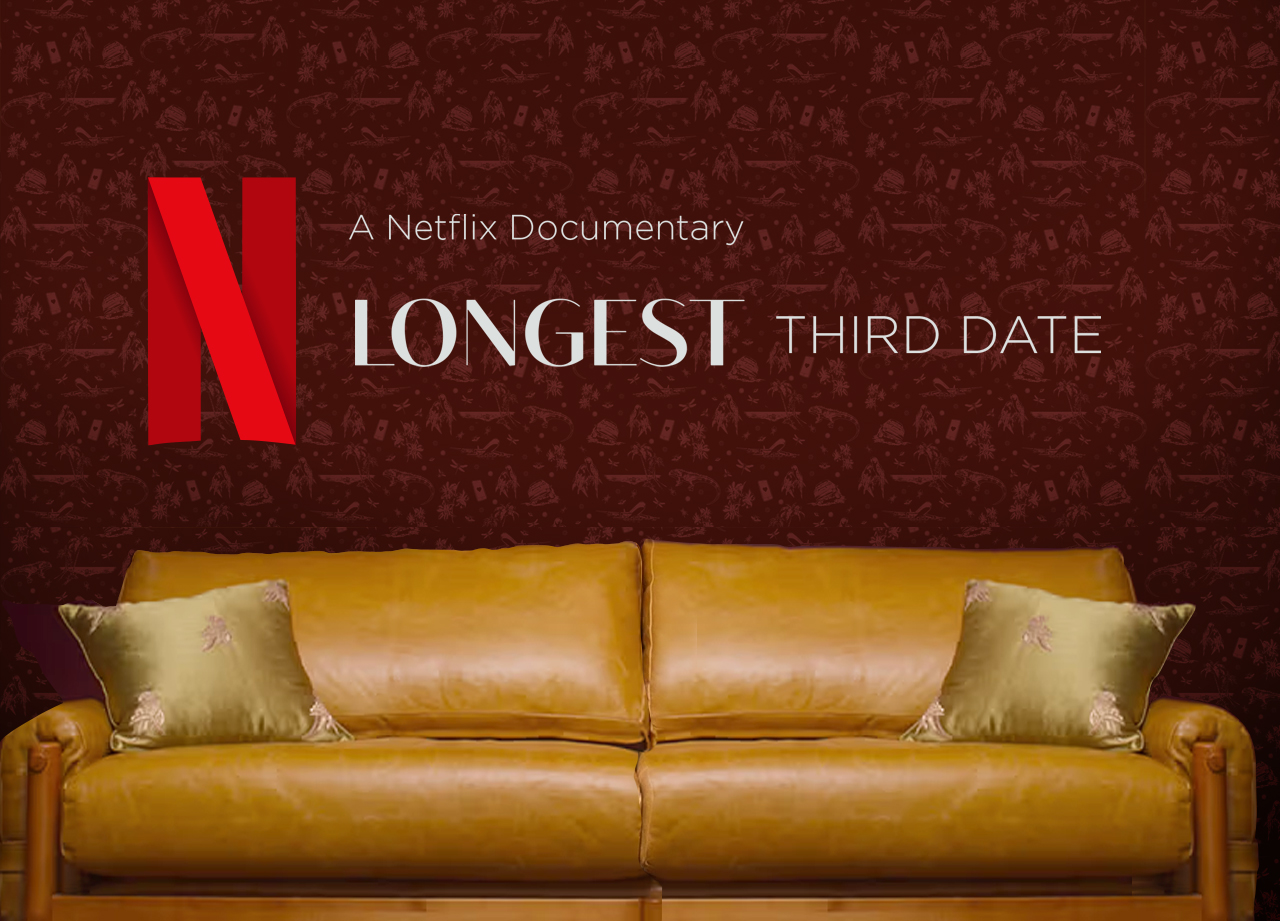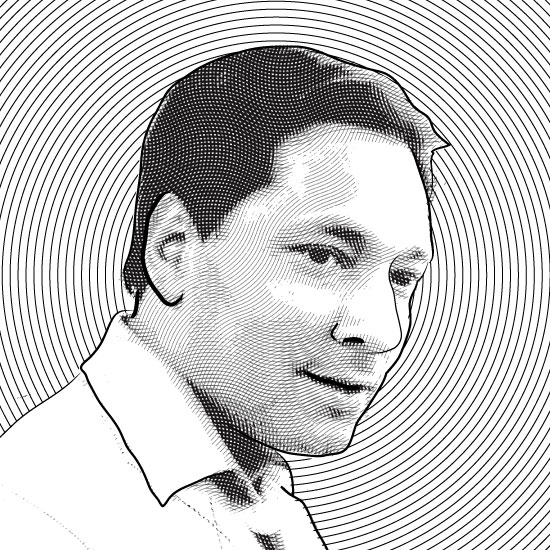Fine Print Process: Translating film scenes into a bespoke illustrated wallcovering — and delivering unexpected creative tools to accelerate approvals
When you’re working with large, multi-layered creative teams, a single idea can evolve into something far greater than the original brief. That’s exactly what happened during our collaboration with Netflix (via ITV) on the documentary The Longest Third Date.
The film chronicles the improbable true story of a couple whose third date turned into an unplanned, months-long adventure after the pandemic stranded them abroad. It’s part romance, part travelogue, and part survival story — a mix that lent itself to a highly stylized visual treatment.
The Creative Brief
Netflix approached us with an intriguing challenge:
“Could you turn key moments from the film into a French Toile de Jouy–style wallpaper pattern?”
They sent us a series of still frames from the documentary and encouraged us to use them as inspiration, not literal reproductions. The goal was to create an illustrated motif that felt timeless and romantic — but with quirky, recognizable elements for viewers familiar with the film.
Among the selected scenes:
- The couple’s car stuck on a rugged, jungle road
- An iguana basking lazily in the sun
- A brilliantly colored parrot, a recurring visual motif in the film
- Other narrative snapshots that hinted at the couple’s journey and surroundings
Project Specifications
- Client: Netflix via ITV Creative
- Scope: Illustrated wallpaper design in Toile de Jouy style, inspired by documentary film scenes
- Additional Deliverables: Interactive micro-app for live color and font experimentation
- Artwork Use: Custom wallcovering + repurposed graphics for title sequences
- Printing Method: Fine-line illustration reproduction for sharp detail and tonal consistency
- Total Area: 500 sq ft.
From Film to Fine Pattern
Working in a French Toile de Jouy style meant simplifying these cinematic moments into monochromatic, engraved-style illustrations. Our design team crafted each element with precise line work and textural detail to ensure the pattern was visually engaging from both near and far.
The client loved the resulting illustrations so much that — in an unexpected twist — several unused designs were repurposed as graphic elements in the film’s title sequences. This crossover between print and motion design was an added creative bonus.
Solving for Consensus: The Micro-App Advantage
Large productions often operate with creative decisions made by committee. While this ensures alignment, it can also mean delays when multiple stakeholders need to sign off on every choice. Early in the process, Netflix’s creative team expressed uncertainty about the color scheme for the wallpaper, as well as the typography for certain titles.
Instead of generating countless static proofs, we built a custom micro-application. This simple but powerful tool allowed the team to instantly swap colors and fonts in real time. The result:
- Faster consensus-building
- Fewer revision cycles
- A shared, interactive “sandbox” for all decision-makers
The micro-app transformed what could have been a week-long back-and-forth into a single collaborative session, impressing the client with our ability to merge design and technology to speed approvals.
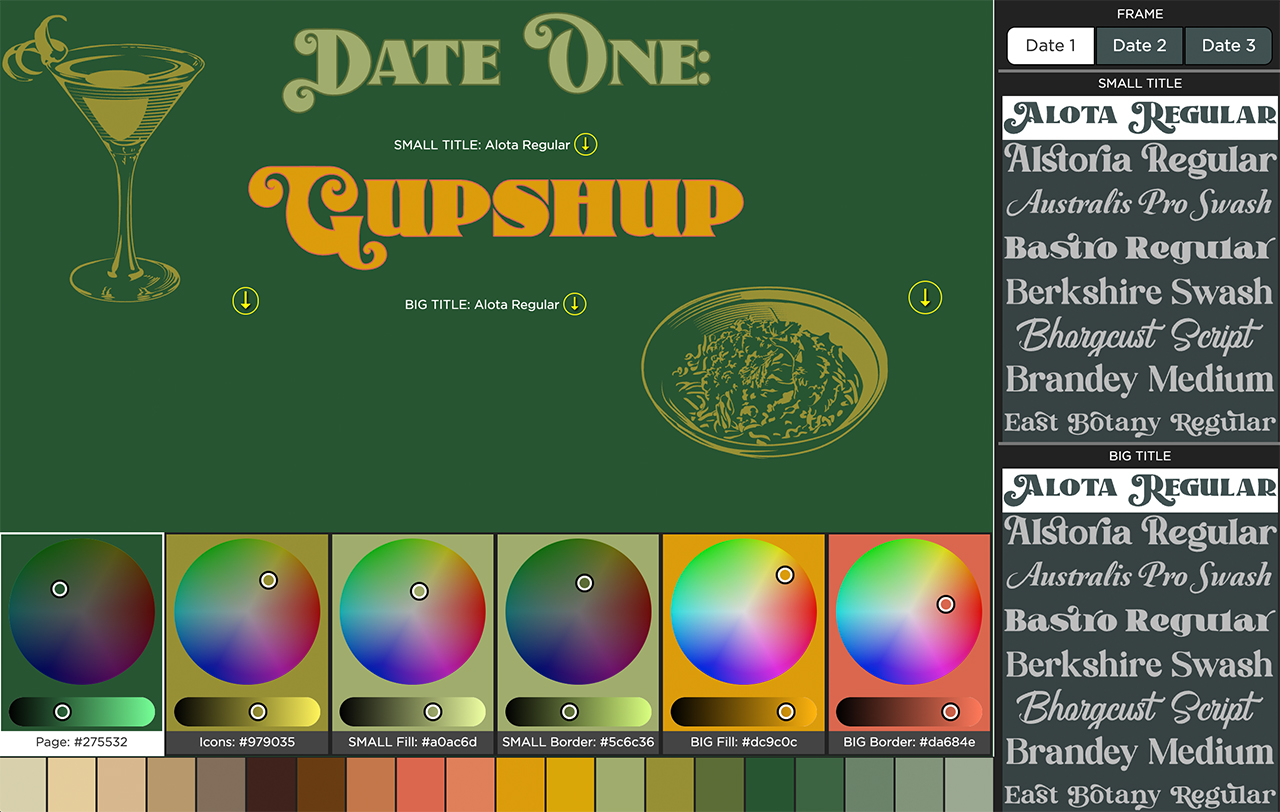
Screenshot from the app. You can play with it yourself by clicking this link.
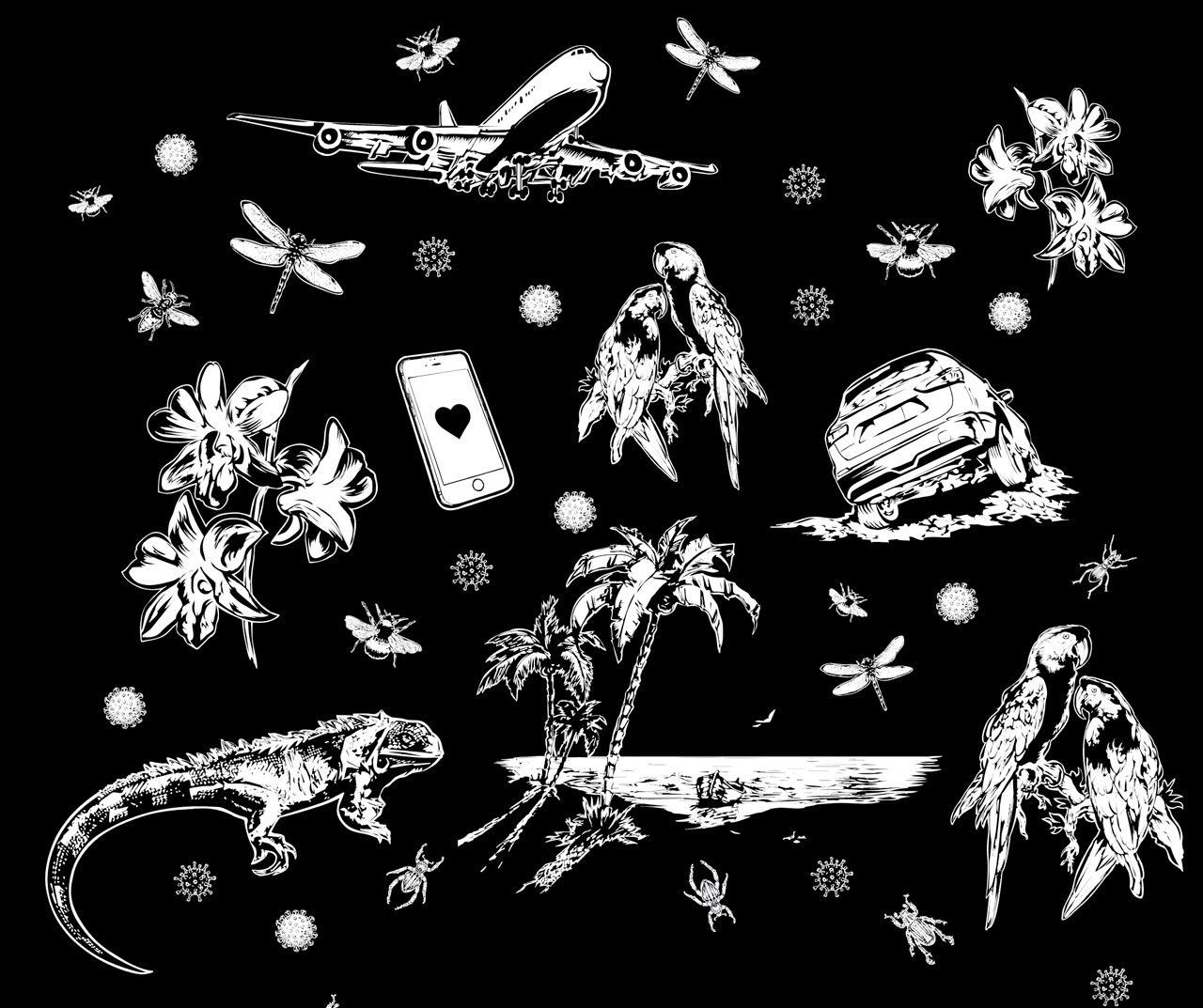 Final draft black and white illustration for pattern
Final draft black and white illustration for pattern
 Press proofs with color variants for the client to choose
Press proofs with color variants for the client to choose
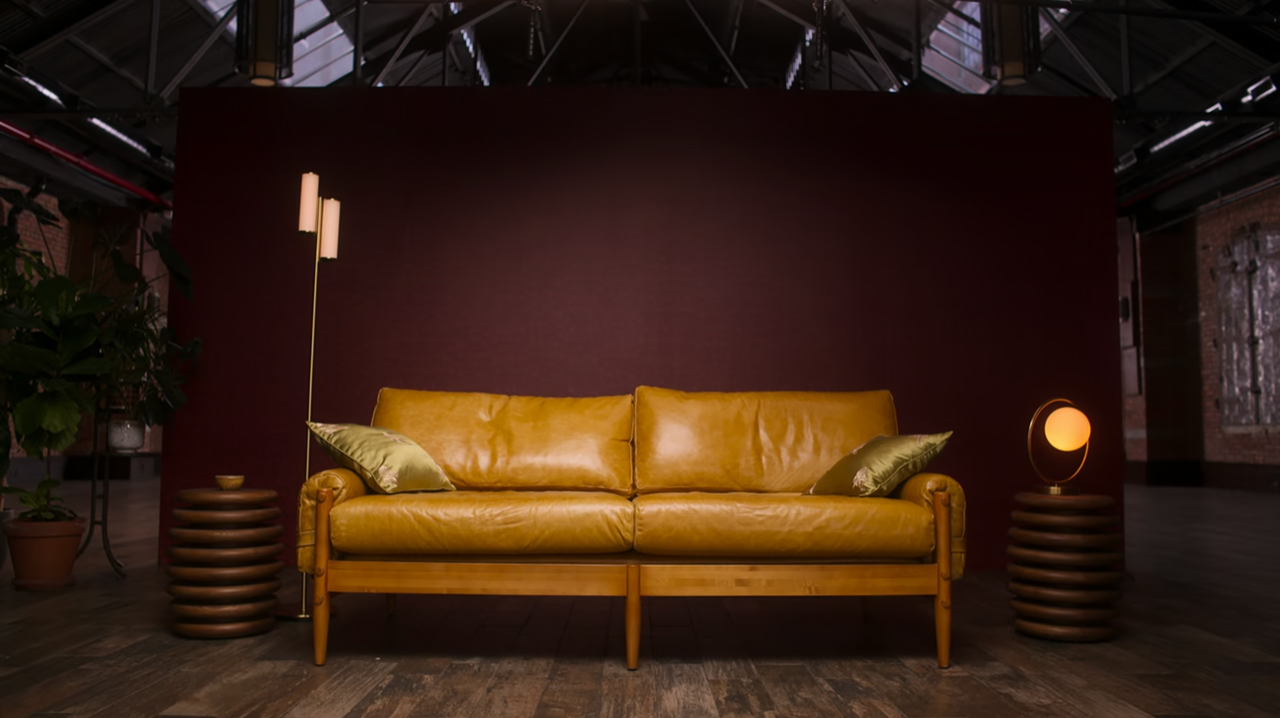 Couch scene with pattern backdrop. Very subtle, so you only see the pattern in closeups
Couch scene with pattern backdrop. Very subtle, so you only see the pattern in closeups
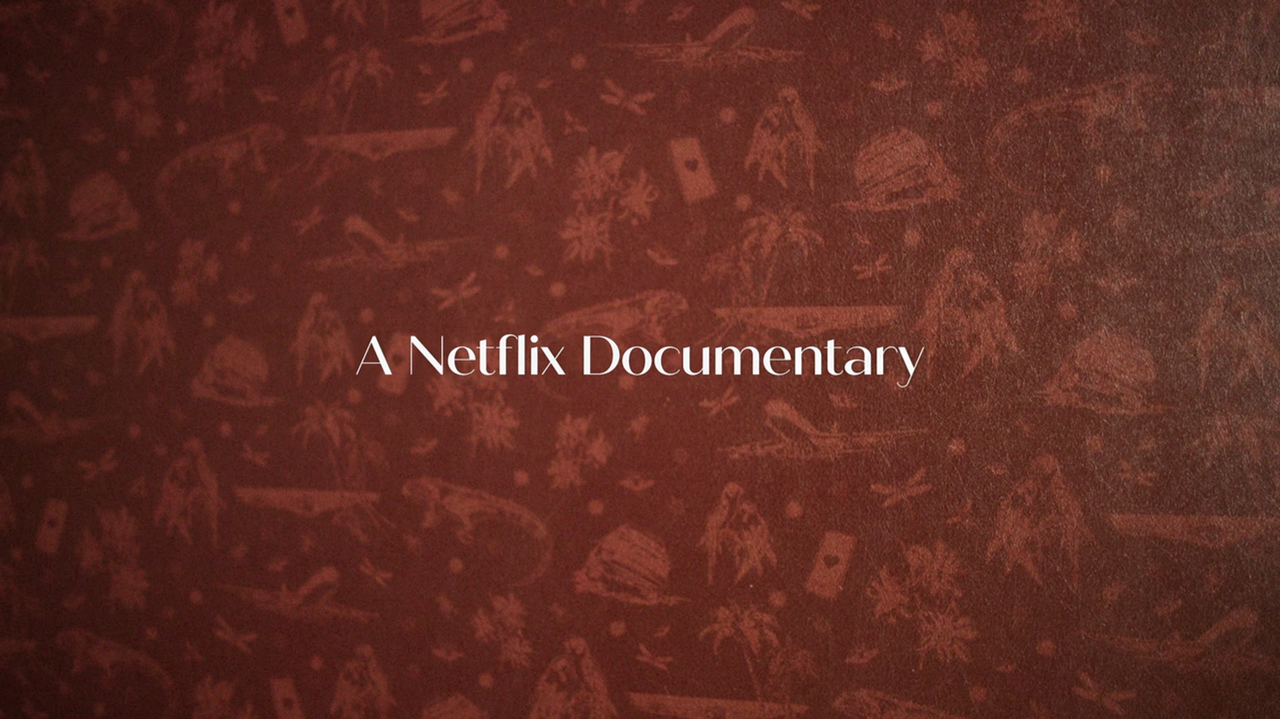 Cold Open title screen with the pattern beneath it
Cold Open title screen with the pattern beneath it
 Our first draft pattern had these cocktail glasses, while they didnt make the cut for the pattern, ITV liked them enough to include them in the first chaper’s title treatment.
Our first draft pattern had these cocktail glasses, while they didnt make the cut for the pattern, ITV liked them enough to include them in the first chaper’s title treatment.
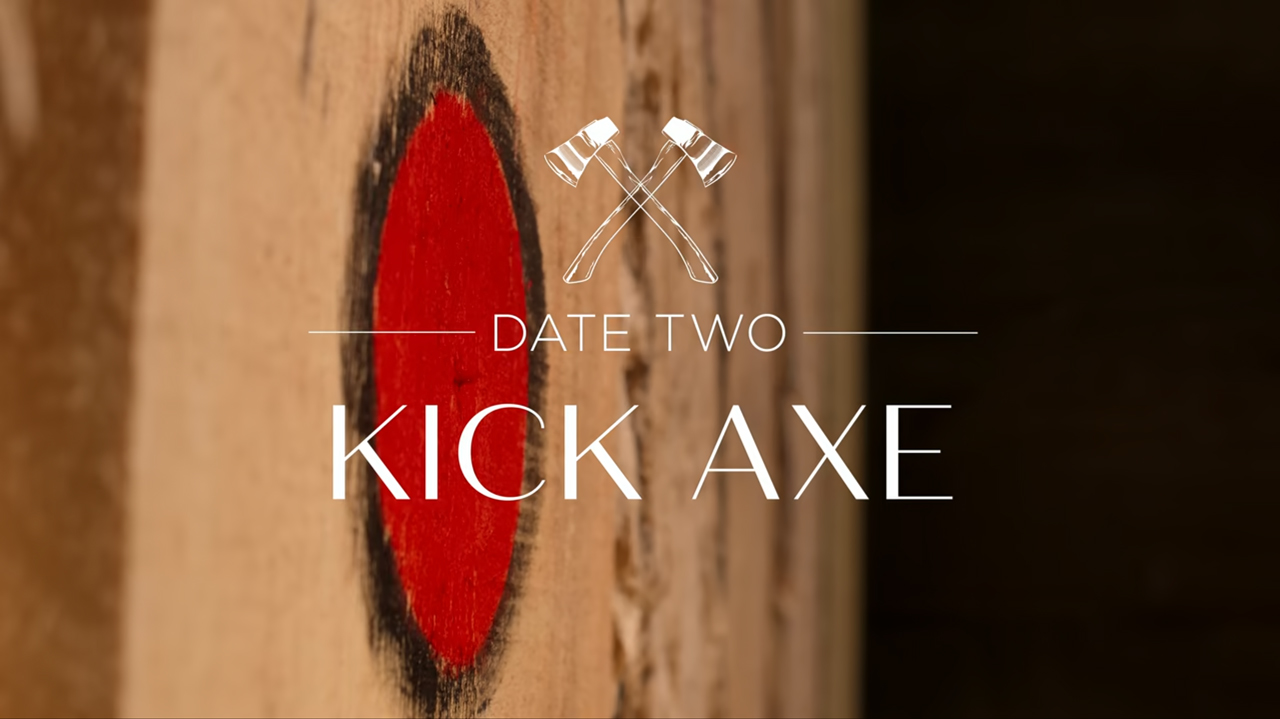 Similarly, these axes were not used in the final pattern, but made a cameo appearance for chapter 2
Similarly, these axes were not used in the final pattern, but made a cameo appearance for chapter 2
Lessons Learned
- Overdeliver when possible — unused assets might find unexpected life in other parts of a project, adding value without increasing costs.
- Empower client teams with tools — interactive solutions like our micro-app not only save time but also improve stakeholder engagement and clarity.
- Committee-driven projects thrive on standardization — creating shared visual reference points early keeps everyone aligned and reduces subjective misinterpretations.
This project was a reminder that print design doesn’t have to stay on the wall. By combining meticulous illustration work with smart digital tools, we helped a global entertainment brand move from concept to consensus faster — while creating assets that lived beyond their original purpose.
